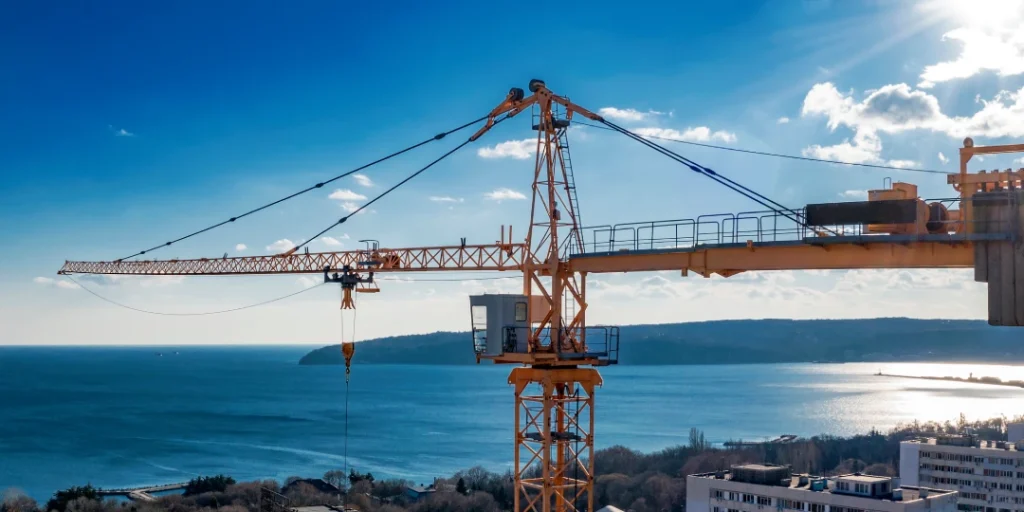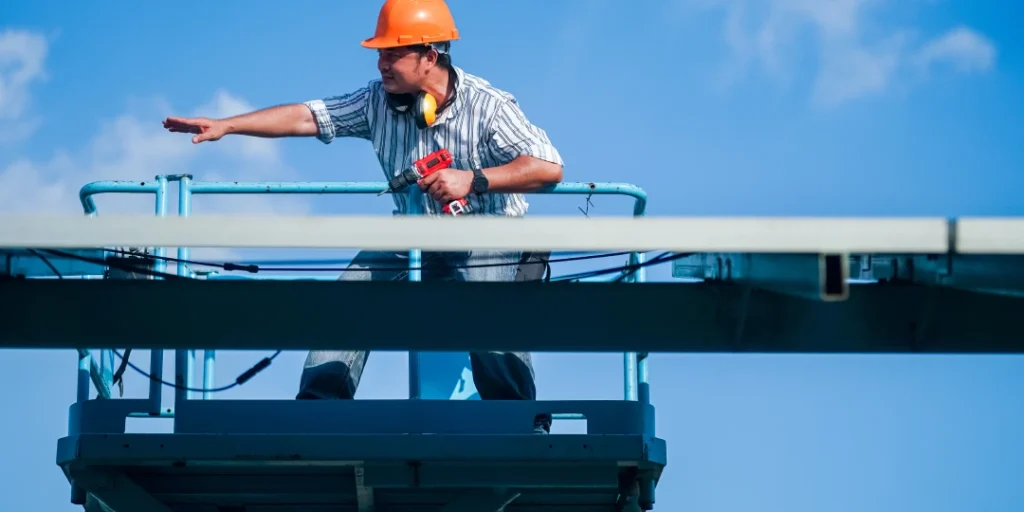The Stark Reality of Fall Hazards in Nashville’s Worksites
Nashville’s skyline is growing fast. High-rises, mixed-use developments, and infrastructure improvements have brought cranes, scaffolds, and crews to nearly every corner of the city. But with this rapid expansion comes a stark reality—elevation work is inherently dangerous. Workers operate on ladders, platforms, and rooftops every day, often just feet away from potential tragedy. Fall protection is the invisible line between a productive shift and a life-altering event. Without it, the risks are immediate and unforgiving.
Even seemingly minor oversights—like a missing guardrail or an unsecured ladder—can escalate into catastrophic incidents. Tennessee construction sites have seen their share of fall-related injuries, many of them preventable. In particular, trades like roofing, masonry, and HVAC are especially exposed due to the nature of their work. At Fortier Loss Control, field data and audits repeatedly show that most fall incidents involve a breakdown in planning, communication, or enforcement. The hazard isn’t just height—it’s underestimating it.
This is why Fall Protection at Fortier Loss Control is treated as foundational, not optional. It’s not an afterthought tacked onto a safety plan. From the initial job hazard analysis to the final walkthrough, Fortier prioritizes fall risk identification and mitigation. The team partners with contractors across Nashville to recognize where fall risks exist and to implement equipment, training, and protocols that meet the moment. In an environment as busy and fast-paced as Middle Tennessee’s construction scene, that kind of vigilance makes the difference.
OSHA Standards: The Backbone of Fall Safety Compliance
The Occupational Safety and Health Administration (OSHA) has drawn a firm line when it comes to fall protection in construction. At elevations of six feet or more, employers must provide protection that prevents injury or death from falls. But these requirements go beyond simply issuing a harness. OSHA’s detailed subparts—like 1926.501 (Duty to Have Fall Protection) and 1926.502 (Requirements for Systems)—lay out a comprehensive approach. Fall Protection, as defined by OSHA, includes proper planning, equipment, rescue readiness, and ongoing worker education.
Too often, violations stem not from defiance but from misunderstanding. Contractors might assume a parapet counts as sufficient edge protection, or that tie-off points can be makeshift. These assumptions can lead to serious consequences, both legal and human. Verbal walkthroughs and generic toolbox talks may check a box, but they fall short of what OSHA expects. Fortier Loss Control emphasizes that Fall Protection compliance is not about doing the minimum—it’s about ensuring the system works when it’s needed most.
At Fortier Loss Control, compliance begins with education and ends with verification. Every policy, every piece of equipment, and every work practice is aligned with OSHA’s framework. Field consultants provide up-to-date guidance on changing standards, interpret confusing sections of the code, and help clients prepare for unannounced inspections. Whether it’s reviewing anchorage specifications or validating rescue plans, Fall Protection at Fortier Loss Control is driven by precision, not guesswork. That’s how clients avoid citations—and more importantly, save lives.
Common Fall Risk Scenarios in Middle Tennessee Construction
Fall hazards on Nashville-area jobsites aren’t rare—they’re daily realities. From the city’s urban infill projects to sprawling residential builds in Franklin or Hendersonville, crews encounter countless situations where one misstep can lead to a serious injury. The most common scenarios? Unprotected roof edges, unsecured scaffolding, exposed floor openings, and temporary platforms with no guardrails. These aren’t theoretical issues. They’re real-world hazards that Fortier Loss Control’s consultants see every week on active sites.
Add to this the unpredictability of weather—humidity, slick surfaces from rain, icy mornings in winter—and the danger escalates. Workers climbing ladders with tools in hand, maneuvering across partially framed structures, or navigating around mechanical units on rooftops face constant exposure. Often, Fall Protection gear is present but improperly used: harnesses not connected, anchor points poorly chosen, or lifelines tangled and ineffective. In these moments, it’s not the gear that fails—it’s the system that didn’t enforce its correct use.
Fortier Loss Control addresses these vulnerabilities head-on. Their site visits focus on more than just visual inspections. They engage crews, verify tie-off procedures, and identify patterns of unsafe behavior. Every site has unique conditions, but the common denominator is always this: Fall Protection must be deliberate. Whether it’s ensuring guardrails are properly secured or retraining a crew on ladder safety, Fortier brings the clarity and consistency needed to close the gap between potential and actual protection.
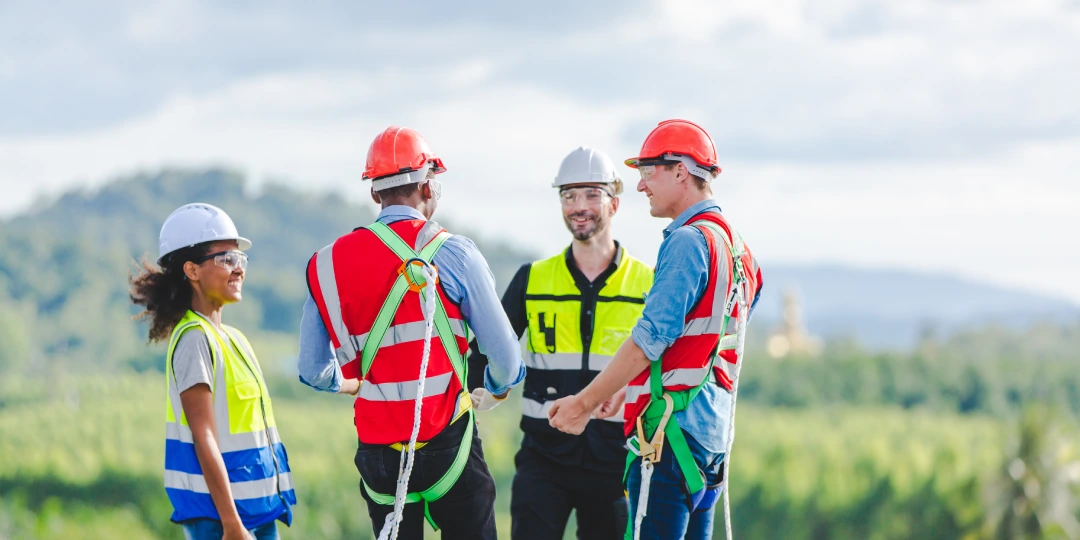
Why Fortier Loss Control Focuses Heavily on Fall Protection
At Fortier Loss Control, Fall Protection isn’t one box in a safety checklist—it’s the foundation of the firm’s service model. Fall-related injuries aren’t just expensive; they’re often life-altering. With that understanding, Fortier has built an internal culture that treats fall prevention as a moral obligation as much as a regulatory requirement. Every consultant, trainer, and field specialist is trained to spot, assess, and eliminate fall hazards before they put workers at risk.
This emphasis is grounded in data. Falls consistently rank as the top cause of fatalities in construction, and Fortier Loss Control sees this reflected in incident reports, insurance claims, and regulatory fines across the region. That’s why they invest so heavily in training, equipment evaluation, and strategic planning. By embedding Fall Protection in every aspect of a client’s safety program—from pre-job briefings to end-of-day debriefs—Fortier raises the standard. Their message is simple: if you’re working at height, there is no margin for shortcuts.
Clients who work with Fortier gain more than compliance—they get foresight. The team doesn’t wait for OSHA citations or close calls to act. Instead, they anticipate where fall hazards are likely to emerge and help companies build safeguards before the first ladder is climbed. Whether it’s selecting engineered anchor points or conducting hands-on rescue drills, Fortier’s holistic approach to Fall Protection ensures that safety isn’t just reactive—it’s built into the DNA of the project.
Key Components of a Comprehensive Fall Protection Program
A serious Fall Protection program has multiple layers, each reinforcing the others. It starts with a thorough hazard assessment—identifying where workers are exposed, what tasks they perform, and how frequently they’re at height. From there, it branches into administrative controls, physical protections, and personal equipment—all of which must work in concert. Fortier Loss Control helps contractors build these systems from the ground up, ensuring that no critical piece is left to assumption or habit.
The first essential element is engineering. Guardrails, toe boards, scaffolds, and netting provide passive protection that doesn’t rely on worker action. These are ideal solutions but require planning and proper installation. Next comes PPE—harnesses, lanyards, self-retracting lifelines, and certified anchorage points. These systems must be not only available but correctly fitted, used, and inspected. Finally, there are procedural controls: written fall plans, site-specific rescue protocols, and clear enforcement guidelines that ensure compliance across every crew and shift.
Fortier Loss Control weaves these components into a cohesive structure. Their specialists assess whether anchor points meet load requirements, if training logs are current, and whether equipment inspections are documented and acted upon. More importantly, they help clients adapt their Fall Protection strategies as jobsite conditions change—because what works on Day 1 may not be adequate by Day 30. A comprehensive program isn’t static. It evolves with the job, and Fortier ensures it evolves in the right direction.
Harnesses, Lanyards, and Anchors: Choosing the Right Equipment
Not all Fall Protection equipment is created equal—and not every jobsite needs the same setup. Selecting the right gear depends on height, duration of work, task movement, and anchorage availability. Yet, many job sites in Nashville rely on outdated or mismatched equipment, creating dangerous blind spots. A harness that doesn’t fit properly or a lanyard with the wrong shock absorption rating is more than just uncomfortable—it’s a failure point waiting to happen.
Fortier Loss Control conducts detailed gear assessments to eliminate these risks. They evaluate every element in the system: the anchor’s load capacity and placement, the compatibility between lanyards and harnesses, and the condition of self-retracting lifelines. Improper anchor selection is a frequent issue—whether it’s tie-offs made to HVAC units or handrails not designed for fall arrest. Fortier’s experts ensure that anchors meet OSHA standards and are tested under real-world job pressures, not just ideal conditions.
Inspection is another area where jobsites often fall short. Fall Protection equipment must be inspected before each use and periodically by a competent person. Fortier not only trains crews to conduct these inspections properly but also helps companies implement inventory and inspection tracking systems. This ensures that worn-out gear is pulled from service immediately and replaced without delay. When equipment selection and maintenance are treated with rigor, fall protection moves from theoretical safety to actual, life-saving performance.
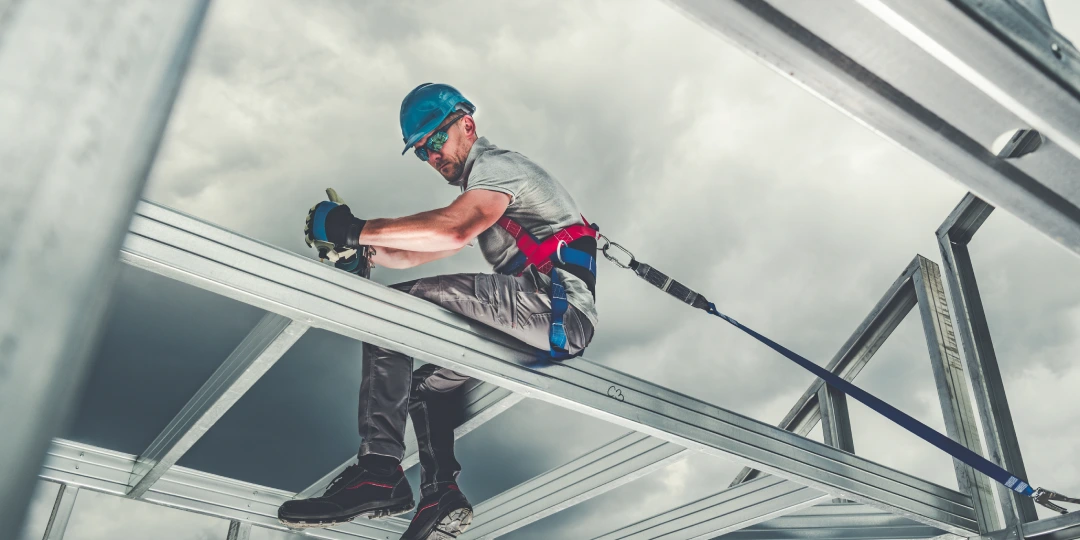
The Human Factor: Training, Accountability, and Safety Culture
No Fall Protection system works without human discipline. Even the best-engineered safety plans can fail if workers cut corners, supervisors turn a blind eye, or training is treated as a one-time formality. In fast-moving environments like Nashville’s commercial builds, workers are often under pressure to move quickly. That’s where lapses occur—unclipped harnesses, unsecured ladders, or anchor points skipped altogether. These aren’t equipment failures. They’re behavioral breakdowns.
Fortier Loss Control tackles this by building safety culture from the ground up. That starts with high-impact training that goes beyond PowerPoint slides. Workers participate in hands-on exercises where they learn to inspect gear, tie off properly, and understand fall forces in practical terms. Supervisors are trained to enforce—not just suggest—safety measures. And everyone, from apprentice to foreman, is held to the same standard. At Fortier, Fall Protection isn’t about rules; it’s about responsibility.
Accountability is critical. Fortier helps companies build systems where safety violations are documented, addressed, and corrected without delay. Audits aren’t treated as punitive but as learning opportunities. By reinforcing positive behavior and correcting unsafe habits, clients see a real shift—fewer near misses, stronger compliance, and more buy-in from the workforce. A culture of safety isn’t accidental. Fortier helps build it with structure, consistency, and a relentless focus on fall prevention.
Site-Specific Fall Protection Planning for Greater Nashville
Every jobsite is different—and so are its fall hazards. A tilt-up warehouse in Antioch presents a different risk profile than a multistory rehab in East Nashville. That’s why cookie-cutter solutions don’t cut it. Fortier Loss Control customizes Fall Protection plans to match each site’s geometry, workflow, and hazards. These aren’t recycled documents—they’re strategic safety tools tailored to the work being performed and the crew performing it.
These plans begin with a detailed walk-through, where Fortier’s safety professionals identify elevation hazards, assess working surfaces, and analyze pedestrian and equipment traffic. They consider environmental factors like wind exposure, lighting, and noise, all of which can impact fall risk. Each plan outlines where and how to install physical protections, what PPE is required, who is responsible for oversight, and what procedures are in place in case of an emergency. Nothing is assumed. Everything is defined.
The result is a living document that adapts as the job progresses. If work shifts to a higher floor, or weather conditions change, Fortier revisits the plan. Their proactive approach ensures that Fall Protection remains relevant—not outdated. In an industry where the only constant is change, Fortier gives clients the confidence that their fall safety program can keep pace with evolving conditions on the ground.
Staying Ahead: How Fortier Keeps Clients OSHA-Ready
OSHA doesn’t wait for a convenient time to visit your jobsite. Inspections are often unannounced, thorough, and focused sharply on fall hazards. For many contractors, this creates anxiety. But Fortier Loss Control clients take a different view—they’re prepared. That’s because Fortier builds Fall Protection compliance into their daily operations, not just into binders. Readiness is a result of habit, not scramble.
It starts with ongoing audits. Fortier doesn’t just show up once and deliver a report. They return to ensure corrective actions are implemented, new hazards are identified, and evolving conditions are addressed. They coach supervisory staff on what OSHA inspectors look for, how to respond to inquiries, and how to maintain thorough documentation. Everything from training records to rescue plans to inspection logs is kept organized, up to date, and accessible. In short, clients are audit-ready every day—not just the day after a consultant leaves.
This proactive model pays off. Fortier’s clients routinely pass inspections with minimal findings and often avoid citations altogether. More importantly, they avoid incidents that lead to investigations in the first place. By treating Fall Protection as an integrated system, not a reactive checkbox, contractors build safer worksites—and stronger reputations. OSHA readiness isn’t just about avoiding penalties. It’s about creating a jobsite where safety is embedded in every task, every day.

Frequently Asked Questions
1. What are the most common fall hazards on Nashville construction sites?
In Nashville, frequent fall hazards include unprotected roof edges, improperly installed scaffolds, open floor holes, and lack of proper guardrails or anchor points. These risks are especially common on fast-paced builds where work progresses quickly and job conditions change daily. Fortier Loss Control addresses these by conducting detailed site audits and helping contractors develop site-specific fall protection plans that eliminate these hazards before accidents occur.
2. How does Fortier Loss Control help companies stay compliant with OSHA fall protection standards?
Fortier keeps clients OSHA-ready through hands-on support that includes customized fall protection plans, equipment evaluations, crew training, and ongoing site audits. Their team interprets complex OSHA regulations—like 1926.501 and 1926.502—into actionable steps. They also prepare crews and supervisors for unannounced inspections by ensuring all documentation, from rescue procedures to inspection logs, is current and accessible.
3. What makes Fortier’s fall protection approach different from basic compliance programs?
Unlike one-size-fits-all safety programs, Fortier Loss Control takes a proactive and tailored approach. They integrate fall protection into the day-to-day operations of a jobsite, not just into paperwork. Their method emphasizes real-world training, behavior accountability, and ongoing improvement—especially by learning from near misses and on-site trends. The result is not just compliance, but a jobsite culture where fall protection is instinctive, consistent, and respected.
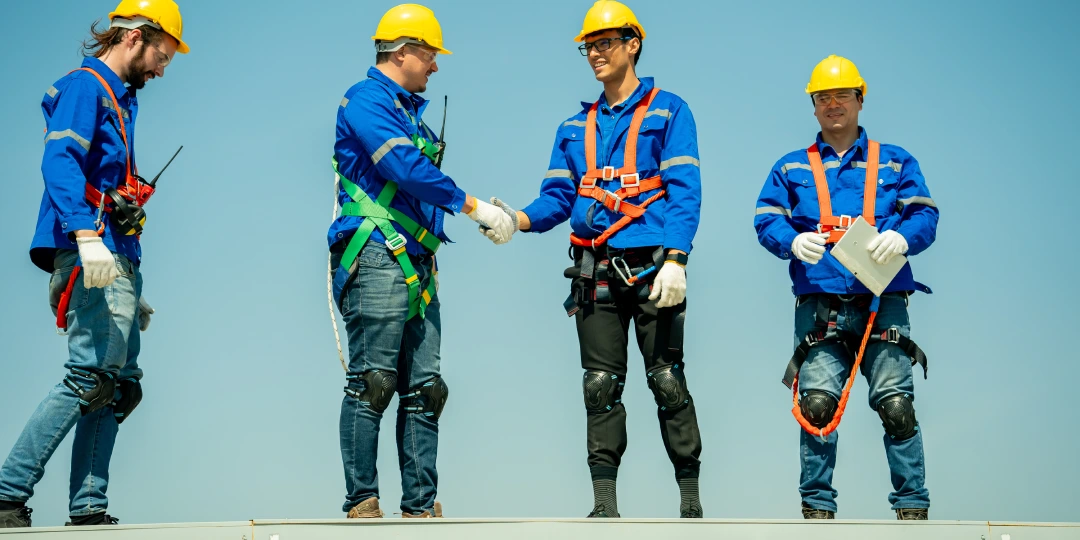
Conclusion: Elevating Safety, Preventing Falls
Fall Protection is not a piece of gear. It’s not a paragraph in a manual. It’s a mindset, a discipline, and a commitment to every worker who steps onto a scaffold or climbs a roof. In a fast-growing city like Nashville, where construction is constant and deadlines are tight, it’s easy to overlook safety for speed. But one misstep can change everything.
Fortier Loss Control exists to make sure that misstep never happens. Their approach—comprehensive, hands-on, and relentlessly practical—keeps contractors compliant, workers protected, and projects moving forward. From customized fall protection plans to real-time training and rigorous site audits, Fortier builds fall prevention into the very structure of a project.
As Nashville continues to rise, Fortier ensures its workforce stays grounded—safely, confidently, and without compromise. Because at the end of the day, there’s no project deadline more important than going home in one piece.


